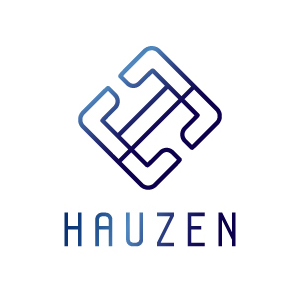On 31 January 2023, the Hong Kong Monetary Authority (“HKMA”) issued its “Conclusion of Discussion Paper on Crypto-assets and Stablecoins” (“Discussion Paper”), in which the HKMA set out its proposals regarding the development of a regulatory framework for stablecoins. The Discussion Paper was released after the HKMA received 58 submissions regarding its initial stablecoin discussion paper published on 12 January 2022 and set out its response in relation to the received feedback.
The Discussion Paper comes after the Monetary Authority of Singapore (“MAS”), on 26 October 2022, published its Consultation Paper on Proposed Regulatory Approach for Stablecoin-Related Activities, in which the MAS sets outs it proposed framework to regulate stablecoin issuers and intermediaries. The MAS invited submissions from interested parties and closed the submission of comments on 21 December 2022.
The Discussion Paper is published against the backdrop of the stablecoin market experiencing severe disruptions in the past year. In May 2022, TerraUSD (“UST”), the then-largest algorithmic stablecoin in terms of market capitalisation, lost its supposed US$1 peg due to the failure of its stabilising mechanism. The subsequent collapse of UST sent shockwaves across the cryptocurrency and stablecoin market. With increased selling pressure in the industry, this led to significant outflows from the largest stablecoin tether (“USDT”), which briefly lost its US$1.00 peg. Notably, USDT also briefly lost its US$1.00 peg following the bankruptcy of FTX. Especially given the increasing prevalence of stablecoins in personal and business usage, such incidents accelerated the interest of global authorities in regulating stablecoins to ensure their price stability.
The Discussion Paper is aligned with the efforts of many international regulators to regulate stablecoin-related activities. In its current form, the Discussion Paper proposes to prioritise regulating only “in-scope” stablecoins, which are stablecoins that purport to reference to one or more fiat currencies, due to the higher and more substantial monetary and financial stability risks, and delay regulating unbacked crypto-assets in the meantime. Such risks stem from stablecoins being more likely to be used in payments, and therefore have more linkages with the traditional financial system.
The HKMA believes the aforementioned market incidents are “lessons learnt from the stablecoin perspective”, as they demonstrated “certain vulnerabilities or even failures in multiple aspects including governance, management, stabilisation mechanisms, transparency and disclosure to users”. Although the HKMA encourages financial innovation, it plans to regulate the following key activities:
| Key Activities | |
| (1) Governance | Establishment and maintenance of the rules governing an in-scope stablecoin arrangement |
| (2) Issuance | Issuing, creation or destroying an in-scope stablecoin |
| (3) Stabilisation | Stabilisation and reserve management arrangements of an in-scope stablecoin, regardless of whether such arrangements are provided by the issuer |
| (4) Wallets | Provision of services that allow the storage of users’ cryptographic keys, access to the users’ In-Scope Stablecoin holdings and the management of such stablecoins |
The HKMA will also consider addressing the issue of multiple or bundled financial services by affiliated entities – similar risks are usually minimised in the traditional finance sector for conflict of interest reasons, but not so in the cryptocurrency world. The FTX collapse is a case in point. The HKMA will adopt a “same risk, same regulation” approach when formulating the regulatory requirements for stablecoins. Instead of adopting a single type of licence covering various activities, the HKMA plans to develop appropriate regulatory requirements for each type of activities. During its formulation, the HKMA will adhere to the following key regulatory principles:
| Key Regulatory Principles | |
| Comprehensive regulatory framework | Appropriate regulatory requirements will be developed in areas such as but not limited to ownership, governance and management, financial resources requirements, risk management, anti-money laundering and counter-terrorist financing, user protection, and regular audits and disclosure requirements |
| Full backing and redemption at par | The value of the reserve assets of a stablecoin arrangement should meet the value of the outstanding stablecoins at all times. The reserve assets should be of high quality and high liquidity. Stablecoins that derive their value based on arbitrage or algorithm will not be acceptedStablecoin holders should be able to redeem the stablecoins into the referenced fiat currency at par within a reasonable period |
| Principal business restriction | The regulated entities should not conduct activities that deviate from its principal business as permitted under their relevant licences. For example, wallet operators should not engage in lending activities |
The HKMA is of the view that entities conducting stablecoin activity in Hong Kong or actively marketing such an activity to the Hong Kong public ought to hold a relevant licence. Further, such entities should be incorporated in Hong Kong, as this would allow the HKMA to effectively supervise such licensed entities and enforce the relevant regulatory requirements. Such a need is particularly relevant when a company is to be wound up, so that the company’s assets and liabilities can be separated with the rest of the group and for seizure of assets.
The HKMA will formulate the regulatory requirements and consult the market afterwards, with the target implementation date being 2023/24. In order to implement the proposed regulatory regime, the HKMA is also considering whether new legislation would be introduced or existing laws would be amended.
It will also be interesting to see the extent to which the HKMA takes reference to the Singapore MAS’ differentiated regulatory approach, which while relatively sophisticated, could also present challenges in interpretation, enforcement and compliance.







